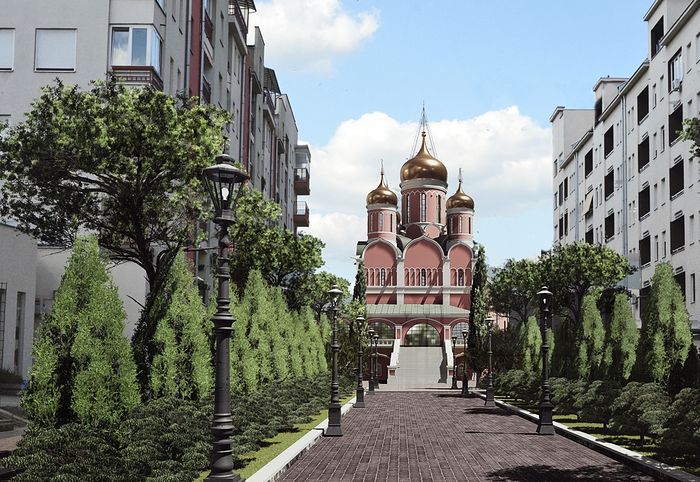Foundation of Russian-Serbian Church In Republika Srpska to be consecrated on centenary of Romanov martyrdom
 Construction on a Russian-Serbian church is beginning in the city of Banja Luka in Republika Srpska (Bosnia and Herzegovina), which will be executed in the Russian ecclesiastical architectural style. According to Bishop Ephraim of Banja Luka, the foundation of the new church is planned to be consecrated on July 17, 2018, the centenary of the martyrdom of the last Russian tsar Nicholas II and his family, reports pravoslavie.ru.
Construction on a Russian-Serbian church is beginning in the city of Banja Luka in Republika Srpska (Bosnia and Herzegovina), which will be executed in the Russian ecclesiastical architectural style. According to Bishop Ephraim of Banja Luka, the foundation of the new church is planned to be consecrated on July 17, 2018, the centenary of the martyrdom of the last Russian tsar Nicholas II and his family, reports pravoslavie.ru.
An agreement was signed in April 2017 with construction company Krajina on the transfer of a plot of land for the construction of a Russian church and cultural center. The project will largely involve local workers, but participants from Serbia and Russia are also expected. Republika Srpska president Milorad Dodik stated that he is proud to be part of a people who are realizing such a project, and Krajina director Borko Djuric expressed a special joy that his employees would have the opportunity to take part in the project. “We, as builders, will try to execute it in the best way,” Djuric said.
The city of Banja Luka is taking upon itself the utility and other expenses for running the church and cultural center.
The draft of the five-domed church with a steepled bell tower is based on the architectural style of an ancient Russian church. The church will have three altars: in the name of the Transfiguration, the Royal Martyrs, and Sts. Symeon and Sava of Serbia, the patriarchs of the Nemanjić dynasty.
Vladyka Ephraim stressed that even the fact that the idea of building such a church in Banja Luka has been around for 100 years already, it has gained advantages important the reason will be dedicated to the memory of the Russian Royal Martyrs, glorified by the Russian and Serbian Churches, and not just as a token of gratitude to the Russian emperor.
The Serious of the World, Surrendered to the Russian army. Many of them became part of the formed Slavic and Serbian corps and ended the war in the ranks of the liberators of the Motherland. These veterans were eager to build a temple in gratitude to the protector of fellow Slavs Nicholas II , Murdered by the Bolsheviks in 1918.
However, this idea did not materialize due to economic difficulties and the outbreak of the Second World War. The project was impossible to carry out for political reasons during Russia Yugoslavia, and the next attempt at its implementation was interrupted by the war of 1992-1995 The
Source: Pravoslavie.ru






